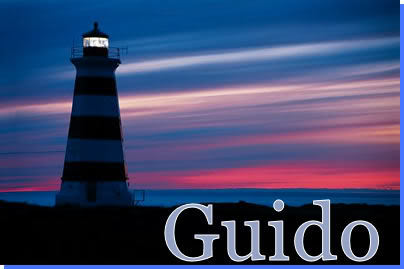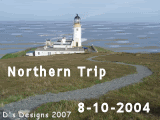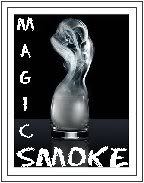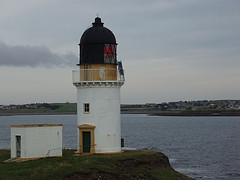The pictures were all incorporated in the video which I posted yesterday. I am just going to tell the story behind what you see.
Kinloch Castle was built around the turn of the last century by the Bullough family, textile magnates of Accrington in Lancashire. They were rolling in money. Sir George Bullough owned a steamyacht, the Rhouma. In it, he sailed the world. It was a huge vessel, twice the size of the MV Lochnevis, which serves the island today. Rhouma has earned its fame in world history, as it was on board this ship (270 ft long) that the peace treaty between Japan and Russia was negotiated in 1905. It is the Japanese emperor's gratitude towards Bullough that has given the castle its preponderance of Japanese artifacts.
Any guests that came ashore from Rhouma would be introduced to the Main Hall. It is designed to overawe. The Steinway grand piano, dating back to 1902, is in excellent condition and I was allowed to play it the day I was there. Two huge vases, each standing 8 feet tall, adorn the upstairs balcony. Three hideous statues, depicting a monkey-eating eagle, rear over the centre. Hunting trophies and paintings fill up the rest of the room.
The contents of the dining room, adjacent, all came from the yacht Rhouma. Her name will return later in this tour.
After dinner, the gentlemen would retire to the smoking room for a game of pool and to admire the latest additions to Sir George's hunting trophies. An intricate ventilation system ensured that all the smoke would be evacuated from the room, and also that it would keep to an agreeable temperature. Kinloch Castle was inhabited on average 7 weeks out of every 52 in each year. Rum being located on the 57th degree latitude north has an inclement, extremely wet climate. The average annual rainfall totals 2,500 mm or 100 inches. London, by comparison, has 850 mm or 34 inches. Back at Kinloch, it had mains electric lighting,powered by a small hydro-electric powerplant upstream along the Kinloch River. Its low amperage output enabled the use of delicate lampshades, which would otherwise have burned away in short order.
Whilst the gents were diverting themselves in the smoking room, the orchestrion would be switched on. This was initially intended for an occasion featuring Queen Victoria - if memory serves, she died before the instrument was complete. It was instead bought by Sir George Bullough and crammed in the cupboard under the stairs. When it plays, it resounds throughout the castle.
The ladies meanwhile went to Lady Monica's Room, and as the pictures show an altogether lighter and more feminine affair. It has high windows, through which the sun (if and when it shines) beams in. This does mean that over the past century, its fittings have deteriorated to a pitiful degree. The couch and the red cushions bear witness to that. Waxed drapes have been placed over some of the furniture. A one-handed clock kept the time - who needed the accuracy of minutes in an environment like Rum? Who does nowadays?
The Castle had its own central heating system, which would pump warm air all round it. So warm in fact that tropical humming birds would be fluttering in and out of Lady Monica's Room. They all died one winter when the heating system failed. Their little remains have been hung, wings outstretched for eternity, in that one display cabinet.
Later in the evening, the party would divert themselves in the Ballroom. As was customary in the Edwardian era, servants and gentility would not mix. In fact, if drinks were required, an order slip would be left in the hatchway by the butler. It would be filled from the other side and left in the hatchway. The butler would then hand the glasses round. The orchestra, which would be playing on board the yacht Rhouma, would sometimes be brought ashore to play on the balcony - behind closed curtains. Discretion was the watchword. The guests that Sir George would bring ashore were only his concern, not anybody else's.
The private apartments of the Bulloughs are located upstairs, and feature a bath with seven different showers and douches. The pictures show a jet of water squirting from the bottom of the bath. Doesn't bear thinking about.
Sir George died of a heart attack in 1939. His son basically blew his inheritance and after the First World War, the castle fell in increasing disuse. The Bulloughs were interred on Rum, in a mausoleum at Harris, 8 miles west of Kinloch on the other side of the island. The first mausoleum was not to the family's liking, so it was destroyed with dynamite. The second, resembling an ancient Greek temple, still stands there. Lady Monica, having died in 1957 at the age of 97, was taking over the horrendous road to Harris - it takes a modern 4WD vehicle an hour to cover the distance - to be laid to rest beside her husband.
Rum is now looked after by Scottish Natural Heritage. Kinloch Castle is not really part of its remit, although an effort is being made. Deterioration over the past 100 years has meant that water ingress is a major problem, although a patch job in recent years has stopped the problem temporarily. Prince Charles' Phoenix Trust may step in to provide the £10m - £15m required for a full restoration.
Today, Kinloch Castle is in use as a hostel cum B&B - I have enjoyed its facilities during a visit exactly three years ago this week.
Monday, 22 October 2007
Subscribe to:
Post Comments (Atom)












Very intresting...I like learning about new places and things. Liked the pics too.
ReplyDeleteAngela
Oh Joy ,you know I enjoyed the video Guido now an explanation , I thought you were lucky to be allowed to take pictures ,but to play the Grand Piano ,no wonder you thanked the staff in your credits ,loved it all from the Oak tree window to the big vases you mentioned to the animal skins on the piano ,and near it ,To the gallery it was wonderful ,what were the boxes on the upright piano ,or 'thinks'maybe that is the orchestrion,thanks again for sharing ...love Jan xx
ReplyDeleteThat was a great story.
ReplyDeleteI would love to stay there myself.
Lori
Such a lovely place.I could live there very happily-minus the fish,please,LOL
ReplyDelete~connie~
beautiful, beautiful ! Linda in WA
ReplyDeleteThe pictures and your wonderful description swept me away for a time to the castle. I cannot imagine the grand affairs that took place there. I tried to watch the video but I was told it is no longer available :(
ReplyDeleteStellar entry...I loved it!!
Lisa
Well as usual your pictures are great, so much history there. I will look at the rest later. Joni
ReplyDeleteVery interesting story....such beautiful artwork....June:)
ReplyDeleteSo fascinating! Love the pictures and the story. Thanks! Linda
ReplyDelete